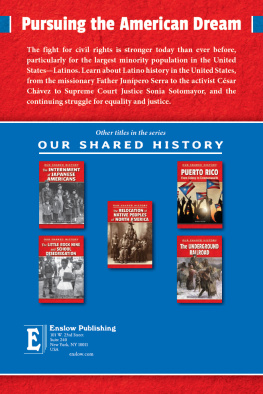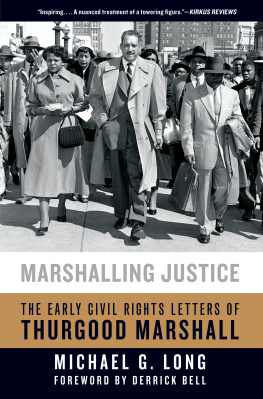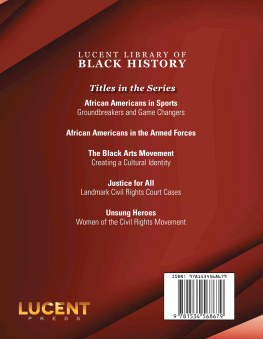Civil Rights in Public Service
Promises of justice and equality made in the U.S. Constitution, numerous Amendments, and decisions of the Supreme Court are hallmarks of American civil rights. Yet the realities of inequality remain facts of modern life for too many Native Americans, African Americans, and Latino Americans, even though state-mandated racial segregation has been outlawed for years. Women still face a variety of forms of discriminationsome subtle and others more overt. There remain many laws that treat people differently because of sexual orientation. People with disabilities are supposed to be protected by a variety of statutes, but many of these policies remain unfulfilled promises. These are just some of the many challenges of civil rights that persist in a nation that proudly points to the words above the entrance to the U.S. Supreme Court that read Equal Justice Under Law.
This text is for public service professionalswhether they are in government agencies, in nonprofit organizations that provide social services for government, or contractors who operate as state actorswho face a twofold challenge. First, they serve an increasingly diverse community with a range of complex challenges. Second, they work and manage within organizations that, fortunately, are themselves more diverse than ever before. For those who work and serve in such settings, civil rights is not an abstract academic study, but a critically important and very practical fact of daily life. Through an engaging exploration of edited court cases, legislation, and speeches, this text examines the civil rights law and policy pertaining to African Americans, Native Americans, Latinos/Latinas, gender, sexual orientation, and disabilities, to learn what civil rights require, but also to come to a more empathetic understanding of how different groups of people understand civil rights and the unique challenges they face. Each chapter further considers key public policy hurdles in the fight for civil rights as well as the implications for public service practice.
Phillip J. Cooper is Professor of Public Administration in the Mark O. Hatfield School of Government at Portland State University, USA.
Civil Rights in Public Service
Phillip J. Cooper
First published 2017
by Routledge
711 Third Avenue, New York, NY 10017
and by Routledge
2 Park Square, Milton Park, Abingdon, Oxon OX14 4RN
Routledge is an imprint of the Taylor & Francis Group, an informa business
2017 Taylor & Francis
The right of Phillip J. Cooper to be identified as author of this work has been asserted by him in accordance with sections 77 and 78 of the Copyright, Designs and Patents Act 1988.
All rights reserved. No part of this book may be reprinted or reproduced or utilized in any form or by any electronic, mechanical, or other means, now known or hereafter invented, including photocopying and recording, or in any information storage or retrieval system, without permission in writing from the publishers.
Trademark notice: Product or corporate names may be trademarks or registered trademarks, and are used only for identification and explanation without intent to infringe.
Library of Congress Cataloging in Publication Data
A catalog record for this book has been requested
ISBN: 978-1-138-85652-3 (hbk)
ISBN: 978-1-138-85653-0 (pbk)
ISBN: 978-1-315-71956-6 (ebk)
Typeset in Times New Roman
by Out of House Publishing
For Dr. Carol Locust, a strong, but sensitive teacher and advocate, guiding others in understanding the great heritage of Native American culture as well as contemporary challenges faced by tribal people. She helps those she serves and teaches to meet the needs of todays society, with mind, body, and spirit in harmony in her own life and with lessons for the rest of us.
Contents
It is now more than two hundred years since We the people declared that our common purpose in creating the Constitution was to form a more perfect Union, establish Justice, insure domestic Tranquillity, provide for the common defence, promote the general Welfare, and secure the Blessings of Liberty to ourselves and our Posterity. It has been more than one hundred and fifty years since the Thirteenth, Fourteenth, and Fifteenth Amendments were added to the Constitution, following a devastating civil war when the union faced a fundamental threat to its continued existence, in part because we had not truly established justice or promoted the blessings of liberty for so many of our people, and particularly for those held in bondage or relegated to conditions of inequality, such that even many of those who were supposedly free were nevertheless unable to vote or participate fully in their own governance or enjoy the full protections of the legal rights of citizens. Thus, the Fourteenth Amendment declared that: No State shall make or enforce any law which shall abridge the privileges or immunities of citizens of the United States; nor shall any State deprive any person of life, liberty, or property, without due process of law; nor deny to any person within its jurisdiction the equal protection of the laws. It is now more than fifty years since the Supreme Court declared unanimously that public programs operated in a manner separated by race, even if equal in terms of physical conditions, are inherently unequal. Yet inequality in educational opportunities remains a reality of modern life for too many Native Americans, African Americans, and Latino Americans, even though state-mandated racial segregation has been outlawed for all those years. Women still face a variety of forms of discriminationsome subtle and others more overt. Despite the 2015 Supreme Court ruling holding that same-sex marriage is safeguarded by equal protection and due process of law, Congress has, session after session, refused to pass legislation that would make Title VII protections against discrimination, including discrimination on the grounds of sexual orientation and identity. People with disabilities are supposed to be protected by a variety of statutes like the Americans with Disabilities Act and the Individuals with Disabilities Education Act, but judicial interpretations of those statutes have raised a host of difficulties. These are just some of the many challenges of civil rights that remain in a nation that proudly points to the words above the entrance to the U.S. Supreme Court that read EQUAL JUSTICE UNDER LAW.
For public service professionals, whatever their chosen field and whether they are in government agencies, in nonprofit organizations that provide social services for government, or contractors who operate as state actors, conducting a range of functions from the operation of corrections institutions to those who adjudicate social service claims on behalf of government, the challenges are twofold. First, they serve an increasingly diverse community with a range of complex challenges. Second, they work and manage within organizations that, fortunately, are themselves more diverse than ever before. For those who work and serve in such settings, civil rights is not an abstract academic study, but a critically important and practical fact of daily life. It is not the preserve of lawyers or law professors, but of each and every public service professionaland indeed of every American.
Unfortunately, many who anticipate a career in public service, in government or elsewhere, have never seriously engaged civil rights. For those who have studied the subject, it was usually in an undergraduate constitutional rights and liberties class in which civil rights was treated as half or less of a one-term course, taught along with civil liberties like those protected by the First Amendment and sometimes even issues related to constitutional criminal process issues such as search and seizure or fair trial rights. Some have been exposed to training courses on the job, but these are often extremely thin and limited attempts to explain the rules and policies of a particular agency or even more general efforts to encourage sensitivity to diversity issues. Although certainly better than no training at alland with apologies to the fine people who present such training programsthey are not sufficient in the contemporary context to provide public service professionals with the range and depth of knowledge they require.








